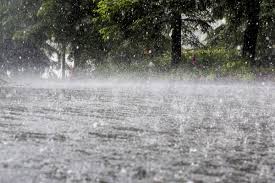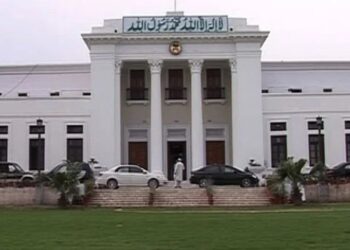ISLAMABAD (Web-Desk); The Pakistan Meteorological Department (PMD) has forecast another round of monsoon rains set to sweep across the country starting today (Friday).
In its latest advisory, the Met Office said moisture-laden winds have begun entering Pakistan and will likely intensify by July 13, while a fresh westerly system is expected to arrive by Friday evening, enhancing rainfall activity.
As a result, widespread rain, wind, and thunderstorms — with intermittent heavy downpours — are anticipated across many regions. In Kashmir and Gilgit-Baltistan, heavy to very heavy rainfall is expected from July 11 to 17.
Specifically, Neelum Valley, Muzaffarabad, Rawalakot, Poonch, Bagh, Kotli, and surrounding areas may see intense spells, while Gilgit, Skardu, Hunza, and Diamir will experience rains from July 11 night and then again between July 13 and 16.
Khyber Pakhtunkhwa will see rain and thunderstorms with scattered heavy showers across Swat, Chitral, Kohistan, Peshawar, Nowshera, and tribal districts like Bajaur and Khyber from July 11 to 17. Punjab, including Islamabad, Lahore, Rawalpindi, and Faisalabad, will face widespread rain with chances of very heavy falls. Southern Punjab districts such as Bahawalpur and Multan may see isolated heavy rains today and again between July 13 and 17.
Balochistan’s northeastern and southern parts, including Quetta, Khuzdar, and Lasbela, will also receive rain and thunderstorms, while Sindh is expected to get moderate showers, including in Karachi and Hyderabad, from July 15 to 17.
The PMD warned that heavy rains could trigger flash floods in Murree, Galliyat, Swat, Islamabad, Rawalpindi, parts of northeast Punjab, Kashmir, and Balochistan from July 14 to 17. Low-lying urban areas in Lahore, Gujranwala, Sialkot, Faisalabad, Nowshera, and Peshawar are at risk of flooding between July 13 and 17.
Additionally, landslides or mudslides could disrupt travel in hilly areas of KP, Gilgit-Baltistan, and Kashmir. Strong winds and lightning could damage weak structures, power poles, and billboards.
Farmers have been urged to plan their activities carefully, while travellers and tourists have been advised to avoid vulnerable areas. Relevant departments have been put on high alert to mitigate potential risks.
Meanwhile, the National Disaster Management Authority’s (NDMA) National Emergencies Operation Centre issued an impact-based alert, warning of possible flooding due to intensified monsoon activity from July 13 to 17.
The combined effect of moisture from the Bay of Bengal and Arabian Sea, coupled with a westerly wave, is expected to cause increased flows in major rivers, including the Indus, Kabul, Jhelum, and Chenab.
Currently, Tarbela, Taunsa, and Guddu barrages are at low flood levels, while Kalabagh and Chashma are at medium levels.
The River Chenab at Marala and Khanki, along with the River Kabul at Nowshera, may also see low floods. Flash flooding is possible in rivers and nullahs in Balochistan, and hill torrents in DG Khan and Rajanpur could reactivate.
With Tarbela Dam at 74% and Mangla at 44% capacity, the NDMA urged residents near rivers and streams to stay vigilant, prepare emergency kits, and move livestock to higher ground. Local administrations were told to ensure dewatering equipment is operational to tackle urban flooding. Citizens were strongly advised to monitor official alerts and avoid crossing flooded roads or low-lying bridges.
The NDMA reaffirmed its close coordination with provincial and district authorities to keep the public updated with timely warnings.

























